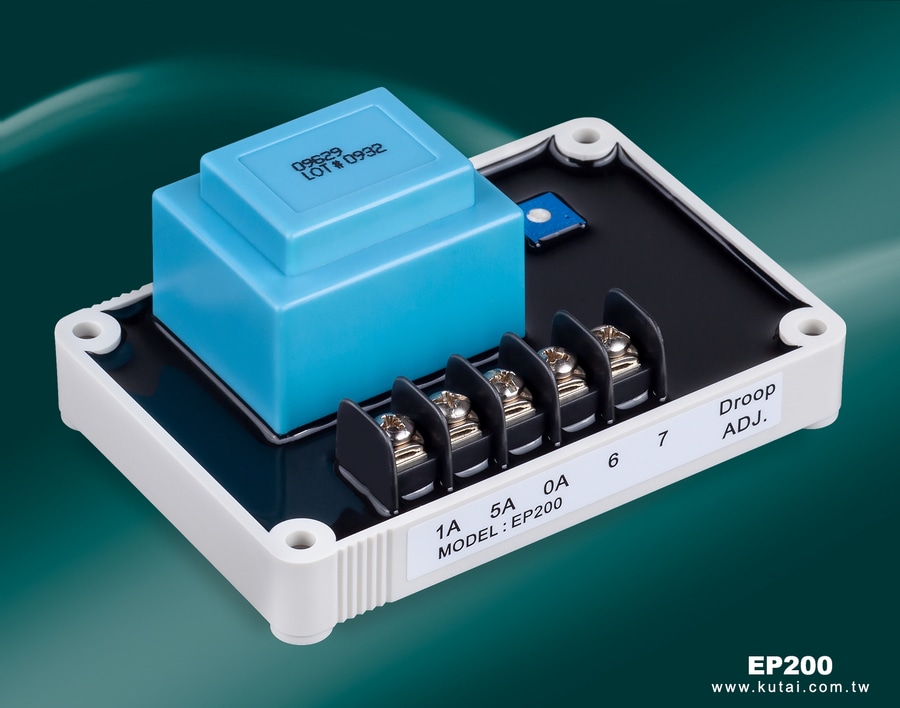
#Industry News
EP200 Kutai EP200 Paralleling Module
Kutai EP200 Paralleling Module
Operating generators in parallel improves fuel economy as well as reliability of the power supply.
Operating generators in parallel has the following benefits -
• creates a larger power supply
• the number of generators operating can be chosen according to the load demand
• if a single generator fails the system can continue operating with other units
Real power sharing depends on speed matching between generator sets (see Kutai EG3000), however, reactive power sharing depends upon voltage matching and excitation system control between the generator sets.
The Kutai EP200 Paralleling Module installs in parallel with a current transformer to provide a droop signal to a generator AVR to allow two or more generators operating in parallel to share reactive loads and reduce circulating currents between them.
When two or more generators are operating in parallel the field excitation of any one generator can become excessive and the difference in voltage will cause a circulating current to flow between generators. The parallel compensation circuit in the EP200 causes the generator AVR to increase the field excitation on the generator with the lower field excitation and decrease the field excitation on the generator with the higher field excitation. By controlling the reactive load the parallel compensation circuit can eliminate circulating currents.
The EP200 Paralleling Module is designed for use with Kutai EA04, ADVR-054, EA350, EA460, and EA63-2.5 voltage regulators.
The EP200 enables both standard generator paralleling schemes - reactive droop compensation and reactive differential compensation.
When reactive droop compensation is used to parallel two or more generators each parallel droop circuit is independent of the other(s). With droop compensation the bus voltage will droop with changing reactive load.
Reactive differential compensation allows two or more paralleled generators in an isolated system to share reactive loads with no decrease, or droop, in generator system output voltage.
An externally connected “Unit-Parallel Switch” is used to short the secondary of the current transformer and the variable burden resistor in the EP200 to allow a generator to be operated independently of the parallel generating system.
DSP-30 Percent Power Meter
The shared power of each generator operating in parallel can be displayed as a percentage of the rated so that the power balance can be checked at a glance by using the DSP-30 Percent Power Meter.





